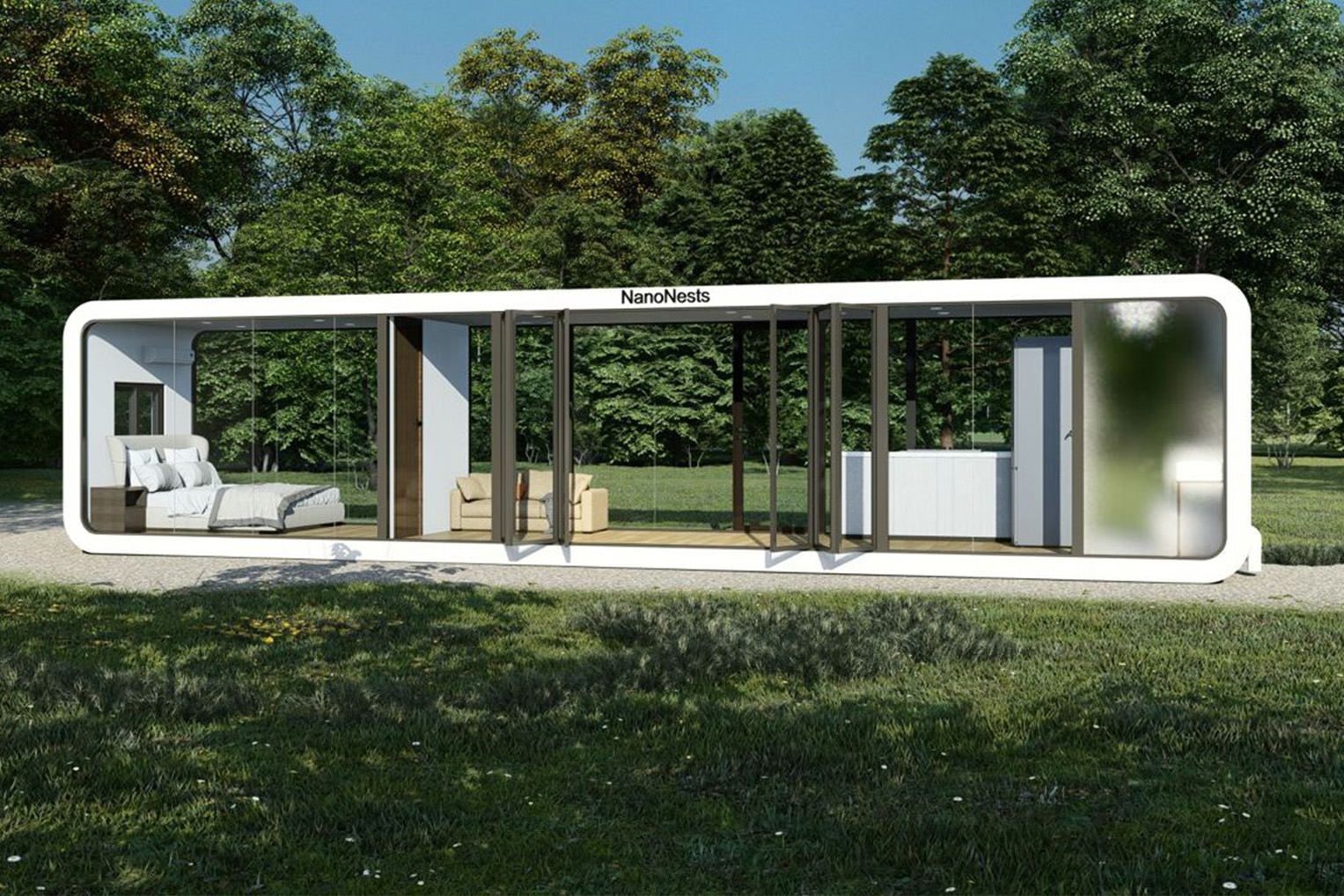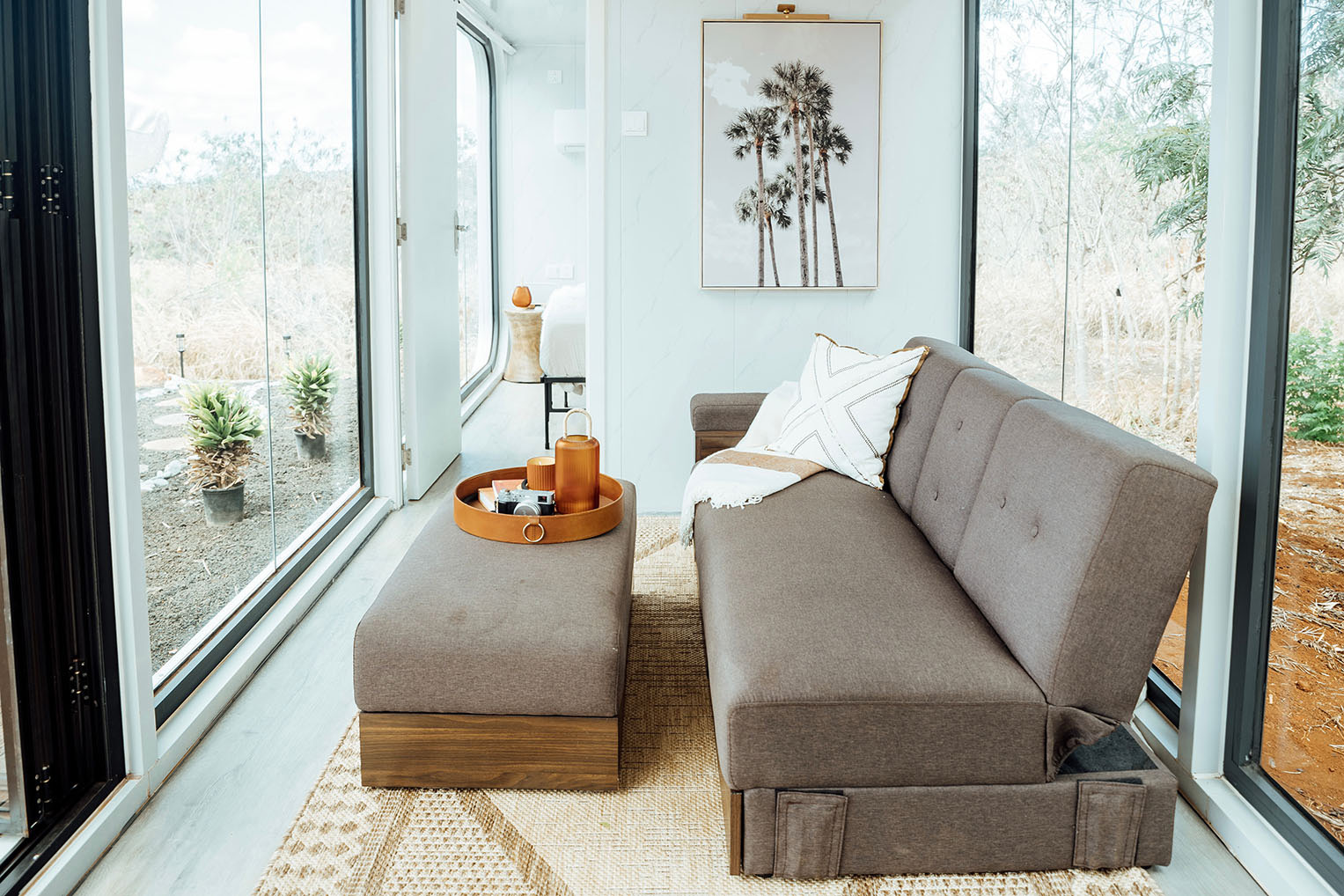Ah, tiny homes—the dollhouses of the modern age, except you can actually live in them! We've all had that midnight-scrolling rendezvous with YouTube, where one tiny home tour leads to another, and suddenly, you're contemplating swapping your 3-bedroom space for a well-designed shoebox. But could these micro-manors leap from novelty to the norm? That's the million-dollar question—or, let's say, the 20-thousand-dollar question, considering the cost-efficiency of these petite palaces.
In this blog, we're diving head-first into the pocket-sized future of tiny homes. Hold on tight as we explore how these bite-sized beauties could revolutionize the housing market. We'll also unearth the challenges that make 'going tiny' not so itsy-bitsy and ponder the societal ripples—both big and small—of this fascinating movement. So, are you ready to downsize your perceptions and upscale your expectations?
Let's get into it!
The Speculative Leap: Could Tiny Homes Go Mainstream?
Picture this: suburban neighborhoods not filled with towering McMansions but sprinkled with delightful, eco-conscious tiny homes. Sounds like a whimsical dream plucked out of a Wes Anderson movie, right? But as fantastical as it sounds, there's growing evidence that these pocket palaces could one day pepper our mainstream housing markets.
Why? Well, let's get into the nuts and bolts—or should we say, the "nooks and crannies?" First off, these homes are the epitome of "affordable luxury." Millennials and Gen Z, burdened by student debt and skeptical of the housing market, find these cost-efficient cuties to be a reasonable first step into home ownership.
Then there's the grey-haired crowd. Imagine a retirement not in a sprawling, impersonal complex but in a cosy, custom-designed tiny home community with shared vegetable gardens and nightly campfires. Who said downsizing can't be an upgrade?
But the potential scenarios don't just end there; they multiply like a Russian nesting doll of opportunities. Remote work enables people to break free from city centres, a drift that tiny homes are perfectly poised to capitalize on. Add the increasing urgency for sustainability, and we might just be looking at the tiny inklings of a grand revolution in housing.
Barriers to Mainstream Acceptance
Now, before we all get carried away and start measuring our lives in square feet—or should I say, square *inches*—let's talk barriers. As we all know, every silver lining has its cloud, and the tiny home movement is no exception.
The first thing you have to deal with is the bureaucratic jungle of zoning laws and planning permissions. Most cities and towns have zoning laws that are as welcoming to tiny homes as a cat is to a cucumber. Minimum square footage requirements, utility rules, and land-use regulations are just the tip of the iceberg—or should we say, the tip of the tiny ice cube?
Then comes the money matter. While tiny homes are lighter on the wallet, traditional mortgage lenders have yet to jump on the bandwagon. It's like trying to fit a square peg in a round hole; the financial industry simply hasn't developed frameworks for these little gems yet.
And let's not forget public perception. For many, the term "tiny home" conjures images of cramped living spaces or a glorified trailer park. It's the avocado toast of housing: trendy among some but met with skepticism by others. Breaking these stigmas will take time and a concerted PR effort. So yes, the tiny home highway does have a few speed bumps. But as we look to the future, these roadblocks are manageable. They're just tiny challenges waiting for big solutions.
Societal Impact of Mainstream Tiny Homes
Ever wonder what would happen if tiny homes went from niche to 'everybody's doing it? ' Well, let's sprinkle some imagination dust and see where the yellow brick road could lead us.
First stop, Planet Earth. Our favorite cosmic residence would breathe a sigh of relief as tiny homes, by their compact nature, use fewer resources and emit less carbon dioxide. Imagine reducing your environmental guilt at the same time as you downsize—now that's what we call a win-win!
Now, let’s talk cities and towns. Urban planning might have to ditch its longstanding romance with skyscrapers and spacious lawns. Instead, we could see community gardens, shared recreational spaces, and oh-so-efficient public transport. Think less concrete jungle, more cohesive community.
And then there's the golden egg: socioeconomic impacts. If tiny homes were as common as overpriced coffee, we could take a big swipe at the affordable housing crisis. But it's not all rainbows and unicorns—mainstream acceptance could also risk turning tiny homes into another asset in the portfolio of the wealthy, exacerbating inequality.
So, whether it's a greener Earth or a lesson in community building, tiny homes offer a full-course meal for thought. And who knows, the next time you hear "Honey, I Shrunk the Kids, " it might be a proud declaration rather than a panicked cry.
Case Studies: Pioneers Paving the Way
Let's tip our hats to some trailblazers who are making the tiny home dream a not-so-tiny reality.
First up, we have Portland’s Dignity Village, a self-governed, community-oriented project providing a sanctuary for the homeless. It's an eye-opener for what tiny home communities could look like when managed well.
Down south in Austin, Texas, the Community First! Village isn't just offering affordable housing; they're offering an affordable lifestyle, complete with shared amenities like gardens, workshops, and even a movie theater.
And across the pond, the Netherlands is experimenting with tiny, sustainable "floating neighborhoods." Because if you can't expand outward, why not float upward, right? So, from sea to shining sea and beyond, these projects show that tiny homes have a big future.
Future Predictions: What to Look Out For?
The future where cars fly, robots cook dinner, and maybe—just maybe—tiny homes are the new suburban dream. So what's cooking in the crystal ball for our pint-sized palaces? Firstly, keep an eye out for new construction technologies. We're talking 3D-printed homes built in days, not months. Imagine hitting the "print" button and—voila!—your new abode is ready for move-in.
Design-wise, expect more modular and multi-purpose furniture, turning your tiny living room into a home theater, office, or yoga studio at a moment's notice. And don't forget legislation. A few more supportive laws and tiny homes could move from trendy to traditional. But a few zoning setbacks could also slam the brakes on the movement. So, dust off your mini crystal balls, folks! The future of tiny homes could be bigger than we ever imagined.
Conclusion
So, are tiny homes the real estate version of a niche indie band—cool but confined to a small fanbase—or could they be the next Beatles of housing, turning mainstream and altering landscapes? The potential is massive, the barriers are tangible, but the societal perks—environmental, economic, and urban—are too promising to ignore.
Ready to be part of something monumental? This isn't just a housing trend; it's a societal revolution in the making. Don't just sit on the sidelines—your voice, your action, can tip the scales. The future is tiny, but the impact? That's for us to decide, and it's going to be colossal.


